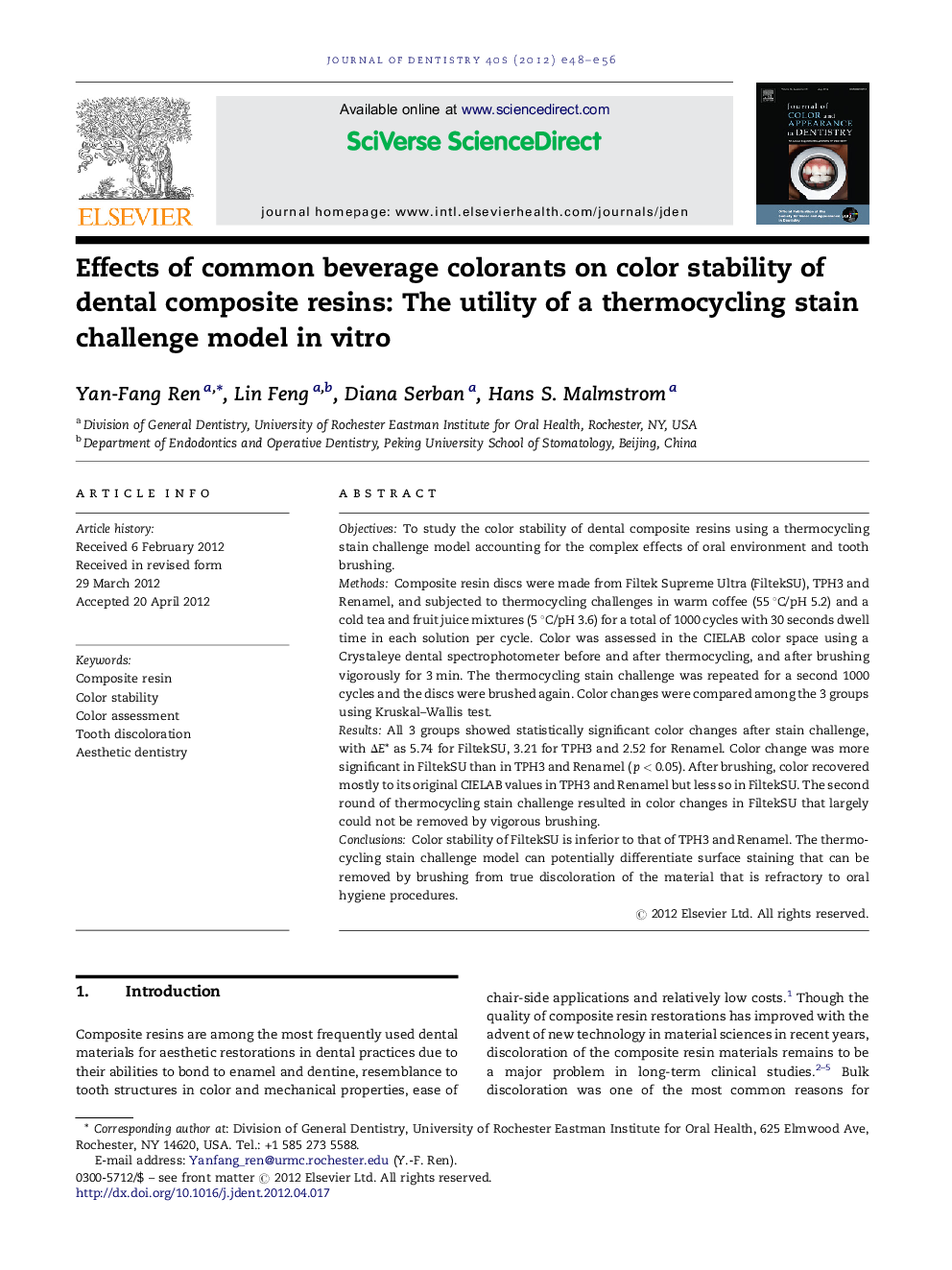| Article ID | Journal | Published Year | Pages | File Type |
|---|---|---|---|---|
| 3145158 | Journal of Dentistry | 2012 | 9 Pages |
ObjectivesTo study the color stability of dental composite resins using a thermocycling stain challenge model accounting for the complex effects of oral environment and tooth brushing.MethodsComposite resin discs were made from Filtek Supreme Ultra (FiltekSU), TPH3 and Renamel, and subjected to thermocycling challenges in warm coffee (55 °C/pH 5.2) and a cold tea and fruit juice mixtures (5 °C/pH 3.6) for a total of 1000 cycles with 30 seconds dwell time in each solution per cycle. Color was assessed in the CIELAB color space using a Crystaleye dental spectrophotometer before and after thermocycling, and after brushing vigorously for 3 min. The thermocycling stain challenge was repeated for a second 1000 cycles and the discs were brushed again. Color changes were compared among the 3 groups using Kruskal–Wallis test.ResultsAll 3 groups showed statistically significant color changes after stain challenge, with ΔE* as 5.74 for FiltekSU, 3.21 for TPH3 and 2.52 for Renamel. Color change was more significant in FiltekSU than in TPH3 and Renamel (p < 0.05). After brushing, color recovered mostly to its original CIELAB values in TPH3 and Renamel but less so in FiltekSU. The second round of thermocycling stain challenge resulted in color changes in FiltekSU that largely could not be removed by vigorous brushing.ConclusionsColor stability of FiltekSU is inferior to that of TPH3 and Renamel. The thermocycling stain challenge model can potentially differentiate surface staining that can be removed by brushing from true discoloration of the material that is refractory to oral hygiene procedures.
